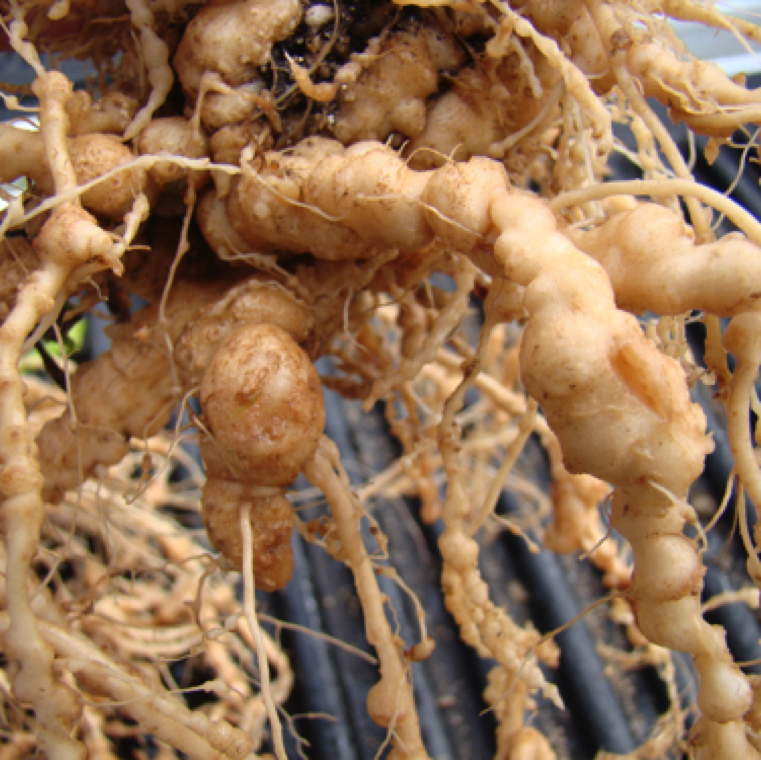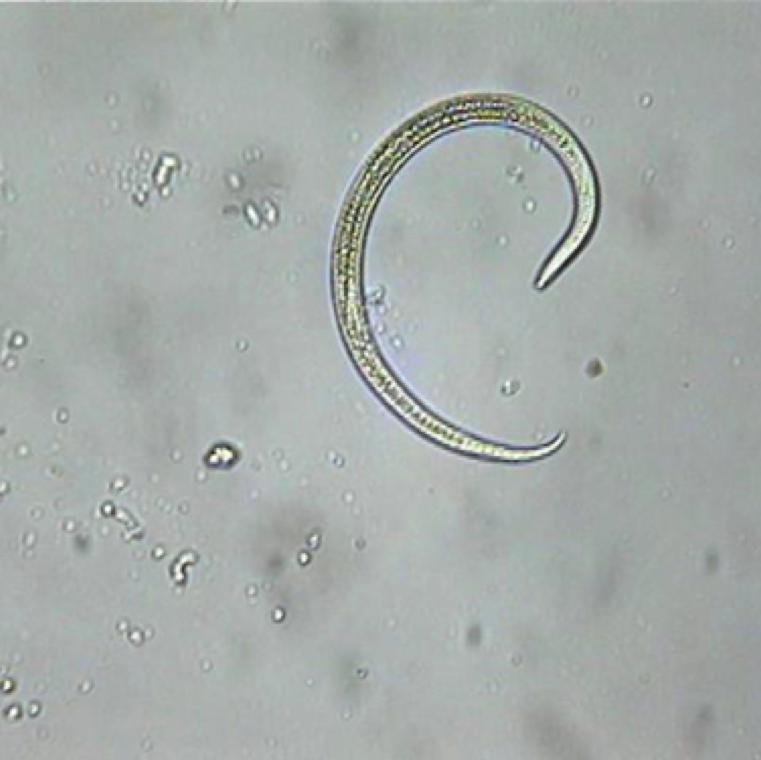


The characteristic symptom caused by root knot nematodes is the galling of the roots. The plants lack vigor under high galling and can become chlorotic.

The disease can be a major problem if soils that have a native population of Meloidogyne sp.. In addition use of susceptible tomato varieties are a major issue leading to reduced yield.

Grafted plant with scion planted accidentally below the soil line with root galls while rootstock do not have root galls (Left). Galls on a tomato transplant (right).

The first stage juveniles (J1) inside the egg. The infective and migratory second stage juveniles (J2) subsequently hatches from the egg, gets attracted to growing roots and feeds.

The J2 develops into swollen third stage (J3) and fourth stage (J4) juveniles in the roots. This subsequently develops into a male adult shown in the picture or a female.
ROOT KNOT
Causal agents: Nematodes (Meloidogyne spp.)
Tomato diseases

